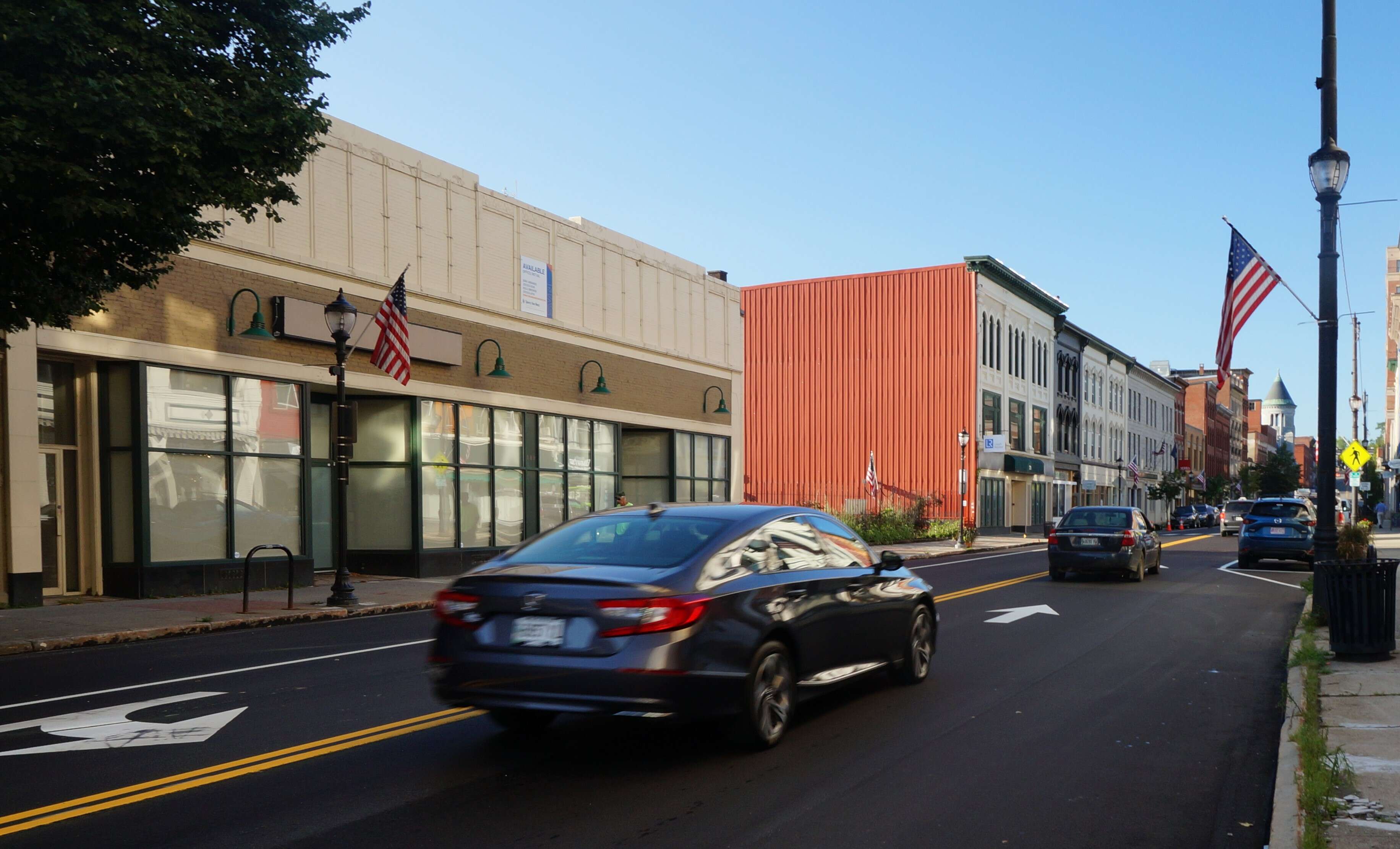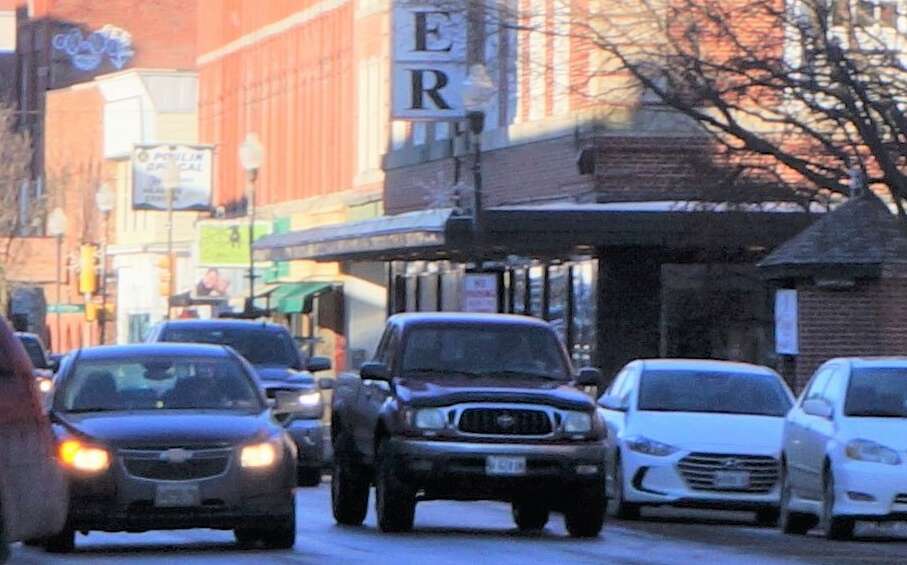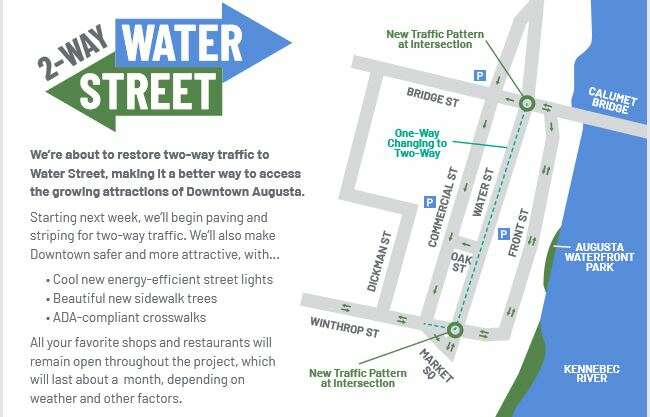
Processing Your Payment
Please do not leave this page until complete. This can take a few moments.
- News
-
Editions
View Digital Editions
Biweekly Issues
- December 1, 2025
- Nov. 17, 2025
- November 03, 2025
- October 20, 2025
- October 6, 2025
- September 22, 2025
- + More
Special Editions
- Lists
- Viewpoints
-
Our Events
Event Info
Award Honorees
- Calendar
- Biz Marketplace
Inside what a two-way downtown means for developers
To prepare city residents for the change to two-way traffic on a section of Water Street in downtown Augusta that’s been one-way for 74 years, the Downtown Alliance posted several studies on its website showing the benefits.
A major benefit the studies show is a decrease in commercial vacancies. That’s key to Augusta's revitalization — despite a growing number of businesses on once-sleepy Water Street, an inventory last year by the city's economic development department shows there were 14 vacancies or unused storefronts in the one-way zone.
But local real estate broker Hoa Hoang didn’t need a study to tell her conversion to two-way would be good for development.
“I'm an advocate, I've always been one," she told Mainebiz this week. The biggest change for those buying and selling real estate? "We'll see values increase."
Two-way traffic began Monday on the two-block stretch that had been two lanes of one-way traffic since 1945.
While two blocks may not seem like a lot, it’s a key two blocks — downtown is less than half a mile long, hemmed in on one side by the Kennebec River and the other by a steep hill. The business district is a compact area, and Water Street is its only thoroughfare.
“Switching to two-way is the single best way we can improve both visibility and access to downtown restaurants and retailers — now, and in the future," Keith Luke, Augusta's deputy director of development services told Mainebiz.
Hoang recently sold a three-story commercial building at 166 Water St., just north of the area that was one-way. She has another listing on the same block. In the past, she’d talked to buyers about property in the one-way area, but the response was often the same: “’Oh it’s dead here,’ they’d tell me. And it was dead. So dead," she said.
Changes have come to Water Street in recent years, with 13 businesses and more than 100 apartments either added or planned since 2016. Hoang isn’t the only one who expects the movement to catch fire now that the entire street is two-way.
The $200,000 project was done by Sargent Corp., of Old Town. The company will also upgrade Commercial Street, a $2 million project, next year. Commercial Street is one-way southbound and will remain that way.

'It will make a difference'
Healther Pouliot, director of the Downtown Alliance board said at Monday's two-way opening that higher traffic counts will make it more appealing to businesses from more populous areas, like Portland. Business owners have told downtown advocates there isn't enough traffic to locate a business there.
A study the city did before undertaking the project estimates an increase of about 200 cars a day.
"It's really going to impact visibility," Pouliot said. "It will make a difference."
Other cities and towns in Maine, and across the country, are making the same change. Waterville will soon begin a more extensive $9 million downtown traffic pattern overhaul that involves making both Main and Front streets two-way.
In Waterville, where Main and Front streets were made one-way in the 1960s, a $7.8 federal BUILD grant, along with $1 million from Colby College and $200,000 from MaineDOT will fund the $9.2 million project. MaineDOT is the administrator of the grant and will oversee the construction aspect, since U.S. Route 201 is part of the area affected.
The work "Will direct traffic into downtown to spur more economic activity, increase property values, and improve flow for commuting traffic," the state said in a news releases announcing the grant last year.
A 2017 Waterville traffic study cited the same benefits Augusta's study did.
“Current traffic patterns push traffic through and around downtown rather than invite customers to the shops, restaurants, cultural venues and businesses that are its lifeblood," the study said.

Supported by studies
"There's a reason why other cities like Rockland and Waterville are paying attention to this trend," Michael Hall, executive director of the Augusta Downtown Alliance told Mainebiz earlier this summer. "They see the same studies we do and the studies all support conversion."
"Out of 40 case studies we have looked at," Hall added, "every city that has converted to two-way, regardless of population, has seen net benefits in their central cores resulting in decreased vacancy rates, more business exposure and increased walkability measures.
He said Monday that studies show as much as a 50% decrease in vacancy over five years after a two-way conversion.
Water Street became one-way in 1945. Traffic backup from drivers passing through was causing problems in the city’s commercial core.
The Bridge Street bridge at the time was the only way to get over the Kennebec River between Waterville and Gardiner, and several major routes converged on it. The move to one-way helped ease congestion, making it easier to get to businesses and other services on Augusta’s “downstreet,” as locals called it.
Since then, commercial activity has spread to malls and shopping centers outside of downtown and through-traffic is now routed over two major bridges and doesn’t go through downtown.

Visibility, safety, destinations, higher values
Some takeaways from studies on conversions to two-way over the past five years show a positive impact on development:
• Many point out that visibility of businesses increases with two-way traffic — businesses on one side aren’t eclipsed by the car in the next lane blocking a drivers’ view or an unnatural turning pattern. A University of Louisville study found that 25% of businesses are eclipsed by a one-way traffic pattern.
• Since the streets are safer for pedestrians, largely because of slower traffic but also because of different turning patterns, there is increased walking traffic, vital for storefront businesses.
• One startling statistic referenced in several studies — when Cincinnati’s downtown Vine Street changed from two-way to one-way, 40% of the businesses closed over the next several years.
• Missoula, Mont., found that many businesses on its one-way downtown streets wouldn't benefit from increased visibility — they’re destination businesses (think fitness club) rather than retail or restaurants. But the study said the business structure is likely because of the traffic pattern, and a change to two-way may lead to more businesses that dependent on pass-by traffic. At a minimum, new specialty retail stores and restaurants could open in vacant spaces," the study said.
• The Center for Sustainable Urban Neighborhoods found that property taxes generated on a two-way portion of a downtown street in Louisville, Ky., were twice that, on average, as on a one-way part of the same street.
John Gilderbloom, director of the Center for Sustainable Urban Neighborhoods at the University of Louisville, wrote in a summary of the study, “While there is no magical quick fix when it comes to turning around neighborhoods, converting multi-lane one-way streets to two-way streets is a smart and affordable policy.”
He said that infrastructure improvements, such as street trees, bike lanes, community gardens, public art and adaptive reuse of abandoned properties adds to the benefits.
His group did a study of two streets in Louisville that were converted in 2011. “The results were stunning,” he wrote. “Two-way conversion improves the livability of a neighborhood by significantly reducing crime and collisions and by increasing property values, business revenue, taxes, and bike and pedestrian traffic.”

Creating 'an energetic place to be'
Hoang, who grew up in Augusta not far from downtown, said she’s long been an advocate of a full two-way Water Street. She remembers when downtown was a vital, energetic area, and also, particularly as a broker, is familiar with how that faded away over the past few decades.
While it may seem a small thing for a southbound car to detour a block onto Commercial Street, behind businesses, "you don’t see what’s there if you’re not driving by it. Not until you get there do you look.”
A driver on Water Street, even if they can’t find a parking space, sees the businesses. “They go find a place to park and come back,” she said.
Parking has been one of the sticking points with some Augusta businesses. There were 128 on-street spaces before the change, but some of those were eliminated. Some of that was because of Americans With Disabilities Act requirements, and crosswalks, curb cuts and more have also been changed to accommodate ADA standards and make downtown more walkable.
Once Commercial Street is upgraded next year, there will be a net loss of no spaces, city officials said. There also is parking in the garage at the corner of Oak and Commercial streets, half a block from Market Square in the center of downtown, as well as a lot at the south end of Water Street.
Hoang acknowledges people don’t want to be inconvenienced, but she points to Portland’s Old Port, where parking is a at a minimum. “People still go, though,” she said. “They’ve created an energetic place to be.
"Why eat at a restaurant, wait for your food, wait for someone to bring you water, when you can do it at home? It’s inconvenient to wait, right? But you go because the food is good, because there’s energy, and it’s happening and full of life.”
She sees that happening more and more in downtown Augusta, and the two-way traffic will add to it.
Property values downtown were low for years. “Not it’s a prime location.”
Mainebiz web partners
Related Content

The Giving Guide
The Giving Guide helps nonprofits have the opportunity to showcase and differentiate their organizations so that businesses better understand how they can contribute to a nonprofit’s mission and work.
Learn More
Work for ME
Work for ME is a workforce development tool to help Maine’s employers target Maine’s emerging workforce. Work for ME highlights each industry, its impact on Maine’s economy, the jobs available to entry-level workers, the training and education needed to get a career started.
Learn More
Groundbreaking Maine
Whether you’re a developer, financer, architect, or industry enthusiast, Groundbreaking Maine is crafted to be your go-to source for valuable insights in Maine’s real estate and construction community.
Learn more-
The Giving Guide
The Giving Guide helps nonprofits have the opportunity to showcase and differentiate their organizations so that businesses better understand how they can contribute to a nonprofit’s mission and work.
-
Work for ME
Work for ME is a workforce development tool to help Maine’s employers target Maine’s emerging workforce. Work for ME highlights each industry, its impact on Maine’s economy, the jobs available to entry-level workers, the training and education needed to get a career started.
-
Groundbreaking Maine
Whether you’re a developer, financer, architect, or industry enthusiast, Groundbreaking Maine is crafted to be your go-to source for valuable insights in Maine’s real estate and construction community.
ABOUT
NEW ENGLAND BUSINESS MEDIA SITES
No articles left
Get access now
In order to use this feature, we need some information from you. You can also login or register for a free account.
By clicking submit you are agreeing to our cookie usage and Privacy Policy
Already have an account? Login
Already have an account? Login
Want to create an account? Register
Get access now
In order to use this feature, we need some information from you. You can also login or register for a free account.
By clicking submit you are agreeing to our cookie usage and Privacy Policy
Already have an account? Login
Already have an account? Login
Want to create an account? Register











0 Comments